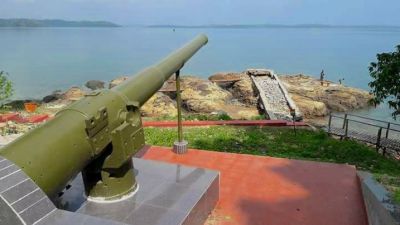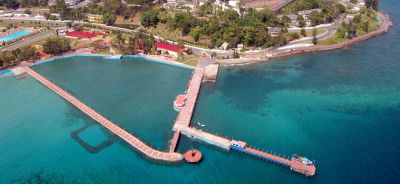Uncovering the History of Cellular Jail: Stories Beyond the Walls
Uncovering the History of Cellular Jail: Stories Beyond the Walls
When it comes to historical landmarks in India, Cellular Jail in the Andaman and Nicobar Islands stands out as a somber reminder of the country's colonial past. Built by the British between 1896 and 1906, this infamous jail was used to exile political prisoners during the struggle for independence.
Despite its dark history, Cellular Jail is now a popular tourist destination that attracts visitors from all over the world. But beyond its iconic façade and imposing structure, the jail holds a myriad of stories that are waiting to be uncovered.
The Architecture and Design
Designed as a seven-winged, puce-coloured building, the Cellular Jail was specifically constructed to keep prisoners isolated from one another. Each wing had three stories of individual cells that were connected by a central watchtower. The layout of the jail earned it the nickname "kaala paani," which translates to black water in Hindi.
The Stories of Resistance
During the years of its operation, Cellular Jail housed many prominent freedom fighters, including Vinayak Damodar Savarkar and Batukeshwar Dutt. These brave individuals endured unimaginable hardships and torture at the hands of their captors but remained steadfast in their fight for independence.
One of the most infamous incidents at Cellular Jail was the hunger strike led by Jatin Das in 1929. Das protested against the inhumane treatment of political prisoners and sacrificed his life in the process. His legacy lives on as a symbol of the indomitable spirit of India's freedom fighters.
The Light and Sound Show
Today, visitors to Cellular Jail can experience the history of this iconic landmark through a captivating light and sound show. The show takes spectators on a journey through time, recounting the struggles and sacrifices of the prisoners who were held within its walls.
As the lights dim and the sound of clanking chains fills the air, visitors are transported back to a time when courage and resilience were the only weapons against oppression. The show is a poignant tribute to the heroes who fought for the nation's freedom.
Visiting Cellular Jail
If you are planning a trip to the Andaman and Nicobar Islands, a visit to Cellular Jail is a must. The jail is open to visitors from 9 am to 12:30 pm and 1:30 pm to 4:45 pm every day except Mondays. Entry tickets cost INR 30 for adults and INR 10 for children.
Guided tours are available for a more in-depth exploration of the jail's history and significance. Visitors can also explore the various galleries and exhibits that showcase artifacts and personal belongings of the prisoners.
As you walk through the corridors of Cellular Jail, take a moment to reflect on the sacrifices made by those who fought for India's freedom. Their stories are etched into the walls of this historic landmark, waiting to be discovered by those who seek to uncover the true spirit of resilience and courage.
Share this post with your friends and family to spread awareness about the rich history of Cellular Jail and the heroes who were once imprisoned within its walls.
Disclaimer : The information provided in this blog is for general informational purposes only. While we strive to keep the content accurate and updated, TravelSetu assumes no liability for errors or omissions. If you believe any part of this blog infringes your rights or causes concern, please notify us immediately at info[at]travelsetu[dot]com so that appropriate action can be taken.



















